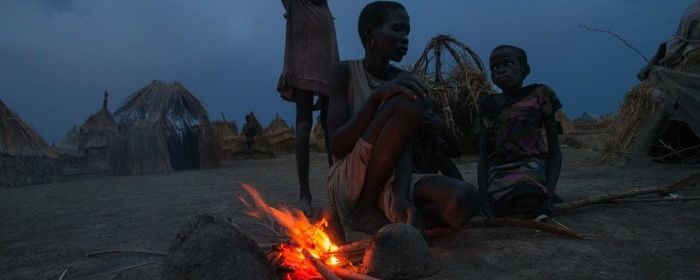The United Nations and aid agencies continue to scale up humanitarian operations in South Sudan after another sharp rise in displacement yet again over the past week, especially in Upper Nile and Unity states.
The number of displaced people (IDPs) within South Sudan is now estimated at 916,900. The number of South Sudanese refugees who fled to neighboring countries is about 309,000, including 60,000 in Sudan, 95,000 in Ethiopia, 120,00 in Uganda, and 34,000 in Kenya, according to UNHCR data.
Another 80,000 Sudanese refugees in Unity State and 126,000 in Upper Nile were in South Sudan before the conflict and are now trapped between the Sudan conflict and South Sudan conflict, largely cut off from supply routes and hence heavily affected.
In total then the number of refugees and displaced people affected by the humanitarian crisis in South Sudan is more than 1.4 million.
OCHA, the UN Office for the Coordination of Humanitarian Affairs, yesterday released a situation report covering the period 11 to 17 April. The information below represents a selection of highlights from the report:
Aid organizations have started an operation in Kodok, Lul and Wau Shilluk in western Upper Nile to provide food, health, nutrition, shelter and sanitation services to about 30,000 displaced people.
The World Food Programme has delivered 721 metric tonnes (mt) of supplies by road, and 672 mt by airdrops and airlifts using a route from western Ethiopia into South Sudan. Targeted areas include Maiwut (386 mt), Maithiang (169 mt), Pagak (167 mt), Akobo (352 mt), Kodok (128 mt) and Maban (192 mt).
A barge movement of supplies from Juba to Malakal, initially scheduled for 15 April was postponed pending government security clearance. The next tentative date for departure is 25 April.
Humanitarian operations have contributed to congestion at Juba airport, leaving limited space for both fixed-wing aircraft and helicopters.
From January to mid-April, approximately 335,000 children between 6 and 59 months were screened for acute malnutrition. 5.6 per cent (18,700) of them were identified with severe acute malnutrition and 12.4 per cent (41,600) with moderate acute malnutrition. Malnutrition treatment programmes have assisted 17,300 severely malnourished children.
Aid workers have begun moving family tents from Juba to Malakal for distribution in the UN base there. Some 3,600 tents will be moved in the coming days. But the aid operation faces logistics problems delaying the delivery of tents and other supplies from national warehouses to field locations.
Photo 1: A woman and her daughters prepare to cook a meal of water lilies in Ganyiel, Unity State (Peter Biro/IRC)
Photo 2: IDP figures per state for the states with largest displaced populations, 17 April 2014
To contact Radio Tamazuj with information, use the contact form on our website. To join the discussion, follow us on Facebook.




